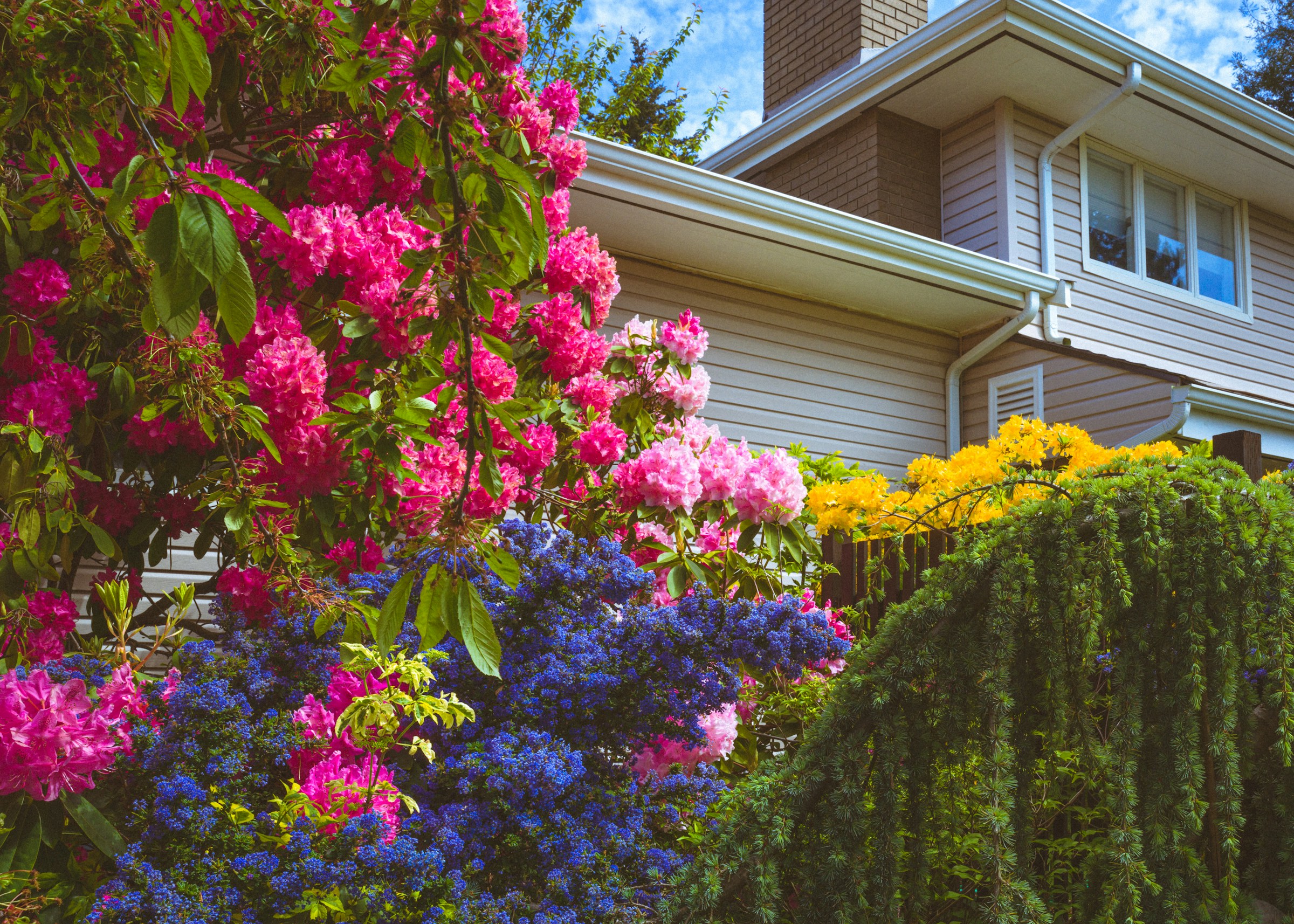6 Useful Hacks To Make Your Garden Thrive
Creating a thriving garden is a goal cherished by many, but it often requires more than just planting seeds and hoping for the best. Whether you’re an experienced gardener or just starting out, incorporating a few hacks can significantly enhance the health and vibrancy of your garden. From maximizing sunlight to harnessing the power of compost, these six tips will help you cultivate a flourishing garden oasis.
1. Strategic Plant Placement for Sunlight Optimization:
One of the most critical factors for a successful garden is sunlight. Different plants have varying sunlight requirements, so it’s essential to strategically place them based on their needs. Observe your garden throughout the day to identify areas with the most sunlight and those that receive partial shade. Position sun-loving plants such as tomatoes, peppers, and cucumbers in sunny spots, while shade-tolerant plants like lettuce and spinach thrive in areas with less direct sunlight. By optimizing sunlight exposure, you’ll ensure that each plant receives the energy it needs to flourish.
2. Mulching for Moisture Retention and Weed Control:
Mulching is a simple yet effective technique that offers multiple benefits for your garden. By spreading a layer of organic mulch, such as shredded leaves or wood chips, around your plants, you can help retain soil moisture, suppress weed growth, and regulate soil temperature. Mulch acts as a protective barrier, preventing moisture from evaporating too quickly and reducing the need for frequent watering. Additionally, it creates an unfavorable environment for weed seeds to germinate, minimizing the time and effort spent on weed control. Incorporating mulching into your gardening routine will promote healthier plants and save you valuable time and resources.
3. Companion Planting for Natural Pest Control:
Companion planting involves growing certain plants together to provide mutual benefits, such as pest control and improved pollination. By strategically pairing compatible plants, you can naturally deter pests and promote a balanced ecosystem in your garden. For example, planting marigolds alongside vegetables like tomatoes and beans can repel harmful insects like nematodes and aphids. Similarly, herbs such as basil and mint act as natural repellents for mosquitoes and flies when grown near outdoor seating areas. By harnessing the power of companion planting, you can reduce the need for chemical pesticides and foster a harmonious environment where plants thrive.
4. Watering Techniques for Efficient Water Use:
Proper watering is essential for the health and vitality of your garden, but it’s easy to overwater or underwater plants without the right techniques. Instead of relying on a fixed schedule, water your garden based on the specific needs of each plant and environmental conditions. In general, it’s better to water deeply and infrequently to encourage deep-root growth and drought tolerance. Consider investing in a drip irrigation system or soaker hoses to deliver water directly to the root zone while minimizing evaporation and water waste. Additionally, water early in the morning to reduce the risk of fungal diseases and ensure optimal absorption by plants. By adopting efficient watering techniques, you’ll conserve water and promote healthier plant growth in your garden.
5. Composting for Nutrient-Rich Soil:
Composting is a sustainable practice that transforms kitchen scraps and yard waste into nutrient-rich soil amendment for your garden. By recycling organic matter like fruit and vegetable peels, coffee grounds, and grass clippings, you can enrich the soil with essential nutrients and improve its texture and structure. Start a compost pile or invest in a compost bin to conveniently collect organic materials and accelerate the decomposition process. Over time, the resulting compost will nourish your plants, enhance soil fertility, and reduce the need for synthetic fertilizers. Embracing composting as part of your gardening routine will not only benefit your garden but also contribute to environmental sustainability.
6. Continuous Learning and Adaptation:
Gardening is a journey of continuous learning and adaptation, as every garden is unique and presents its own challenges and opportunities. Stay curious and open-minded, and don’t be afraid to experiment with new techniques and plant varieties. Keep a gardening journal to track your observations, successes, and failures, allowing you to learn from your experiences and make informed decisions in the future. Connect with fellow gardeners in your community or online forums to exchange tips, advice, and inspiration. By embracing a mindset of lifelong learning and adaptation, you’ll empower yourself to create a thriving garden that brings joy and beauty to your life.
With the right knowledge and techniques, anyone can cultivate a thriving garden oasis. By implementing these six useful hacks—strategic plant placement, mulching, companion planting, efficient watering, composting, and continuous learning—you’ll create an environment where plants flourish, pests are controlled naturally, and sustainability is prioritized. Whether you’re a seasoned gardener or just starting out, these hacks will help you unlock the secrets to a successful garden and enjoy the bountiful rewards it brings.


